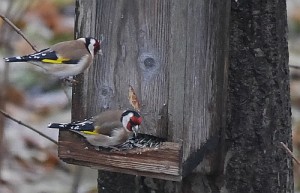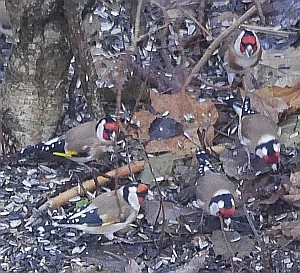This week’s perennial veg stir-fry with soba (buckwheat noodles), Japanese style contained the following (roughly left to right in the picture):
Nettles / stornesle (Urtica dioica)
Burdock / storborre roots (Arctium lappa); stored in the cellar
Wapato tubers (Sagittaria latifolia); stored in the cellar in water
Ramsons / ramsløk (Allium ursinum)
Caucasian spinach / stjernemelde (Hablitzia tamnoides)
Giant bellflower / storklokke (Campanula latifolia)
Himalayan water creeper (Houttuynia cordata) – reddish shoots
Sand leek / bendelløk (Allium scorodoprasum)
Garlic / hvitløk (Allium sativum)

Tag Archives: Arctium lappa
Root hairs and burdock
I used some burdock / borre root (Arctium lappa) in an oriental stir-fry the other day. They’ve been stored in autumn leaves in the cold cellar since autumn and now with the temperature increasing, the roots had developed many white root hairs. Their function is to dramatically increase the root surface area and hence interface with the soil, and hence enhancing the absorption of water and minerals.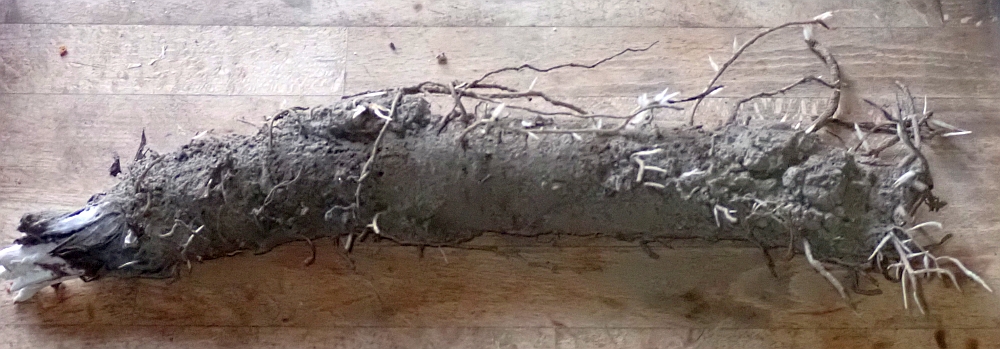

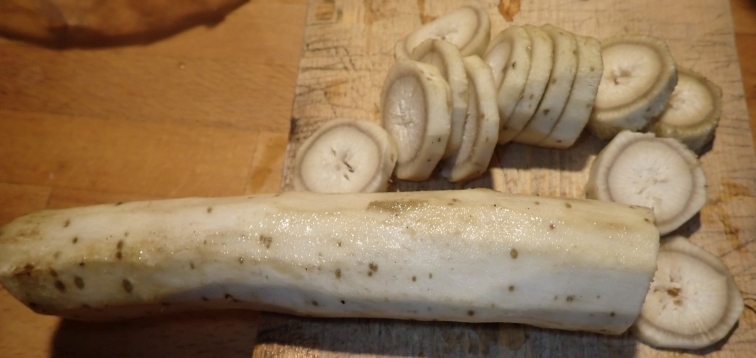
Rhizo-bacalhau
We occasionally eat wild fish and bacalhau is a favourite made from Norwegian dried cod that can be found in supermarkets here. More or less anything goes in bacalhau (bacalao) and although most people make it in the same way – layers of potato, fish, tomato and onions, often with chili – the Portuguese have hundreds of ways of preparing baccalao (dried cod). Being self-sufficient, detailed recipes aren¨’t useful and we use whatever is available at the moment. Winter is the time for stored bulbs, corms, tubers, rhizomes, and taproots. See below the picture for yesterday’s baccalao ingredients with 14 home grown below surface storage organs plus some greens (I’m pretty sure nobody else had this version of the dish…ever!):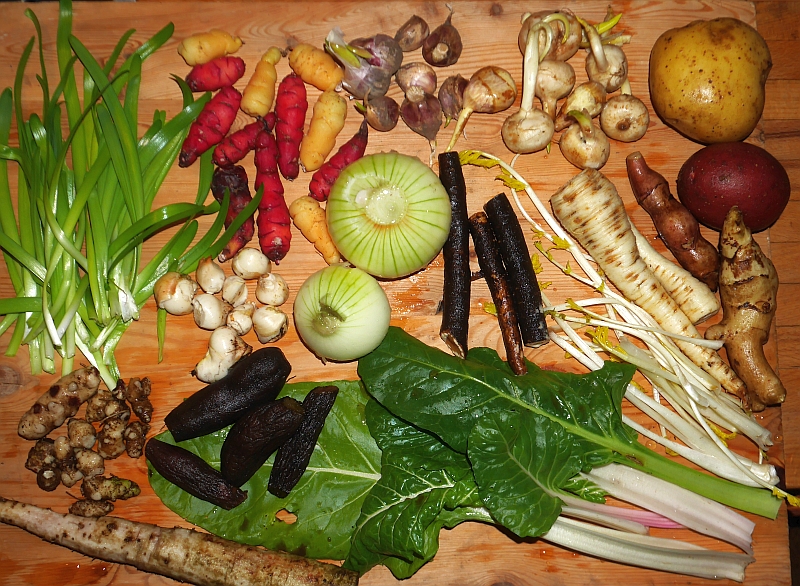
Oca (Oxalis tuberosa): yellow and red varieties
Garlic / hvitløk (Allium sativum)
Wapato (Sagittaria latifolia)
Potato / potet (Solanum tuberosum) – 2 varieties
Jerusalem artichokes / jordskokk (Helianthus tuberosus)
Parsnip / pastinakk (Pastinaca sativa)
Scorzonera / scorsonerrot (Scorzonera hispanica)
Common onion / kepaløk (Allium cepa)
Cacomitl (Tigridia pavonia)
Yacon (Polymnia sonchifolia)
Burdock / storborre (Arctium lappa)
Madeira vine (Anredera cordifolia)
Parsnip / pastinakk (Pastinaca sativa) shoots – had started shooting in the cellar
Leaf beets / bladbete (Beta vulgaris var. flavescens) – 3 varieties
Allium nutans (forced in the living room)
plus (not home grown) organic tomatoes, olive oil and olives
(I forgot the dandelion…will add tonight: we make enough that it lasts for several days….and the taste improves!)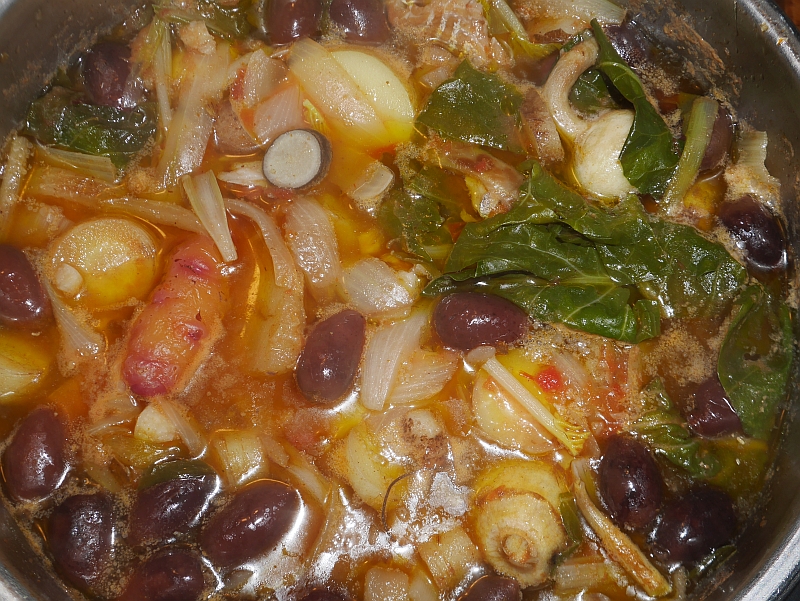
Burdock harvest
I have a large bucket on the balcony where i grow greater burdock (Arctium lappa) for the birds, Both goldfinches (stillits) and greenfinches (grønnfink) eat burdock seed in winter and by growing the plants on the balcony I have close views of both species from where I’m typing this! Last year, the plants flowered and set seeds, they germinated en masse this spring, I thinned them and this was the harvest today. The largest roots and the smallest ones will be replanted in the spring. The others will be eaten in oriental stir-fries this winter.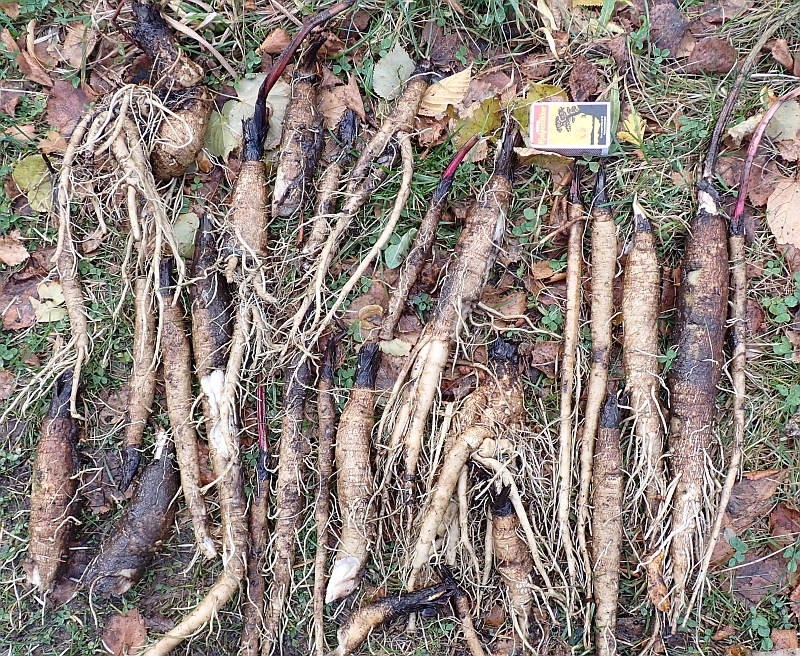
See also other burdock posts: https://www.edimentals.com/blog/?s=arctium
Is feeding birds a good thing?
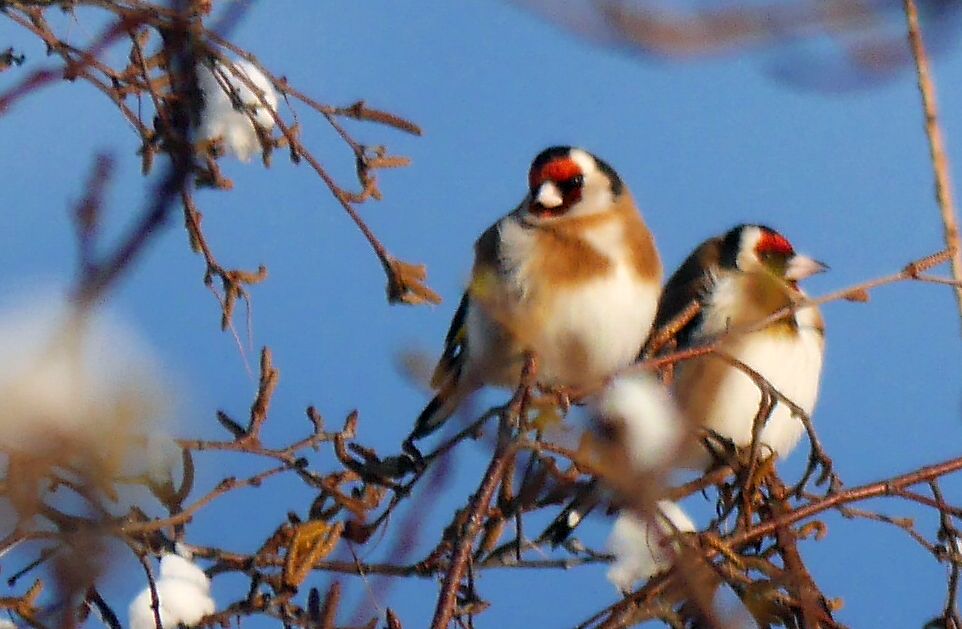
Feeding birds in winter isn’t necessarily a good thing and at least one study has shown that birds lay lower numbers of eggs when fed well, perhaps due to an unnatural unbalanced oil-rich diet: https://blog.nature.org/science/2015/01/05/winter-bird-feeding-good-or-bad-for-birds
However, there are many studies showing the opposite. But is good winter survival and artificially high populations necessarily a good thing apart from entertaining us and increasing awareness of the natural world.
Then there’s the spread of disease at bird feeders as with the greenfinch (grønnfink) in the UK (populations plummeted and bird feeders no doubt contributed to the spread). That birds are discouraged from migrating and stay in the same area year round can also lead to greater exposure to disease.
But what about the production of bird food? That happens often in large fields, mostly using conventional BigAg non-organic systems which directly impacts local bird populations by pesticides and habitat loss. Here in Norway, little of the bird feed is grown in-country.
For these reasons, I try as far as possible to provide natural food for the birds so that they can find alternatives and I can delay putting out food as long as possible. Home grown apples are put out for the thrushes, I tidy seed heads in spring and nettle seeds loved by finches are allowed to hang all winter. Local grain can also be put out for yellowhammers (gulspurv).
In the case of goldfinches (stillits), their main food is burdock (borre) and I have introduced Arctium lappa (greater burdock / storborre) to my garden for them and greenfinches (grønnfink). However, at this time of year they tend to move over to the birdfeeder.
Here’s a couple of videos from the weekend of these beautiful birds that once were rare in this part of Norway, but are becoming more common each year. See other goldfinch posts here: https://www.edimentals.com/blog/?s=goldfinch
The Goldies are back!
These beautiful birds started appearing in my garden some 15 years ago as I grew and saved seed of vegetable burdock (borre) or Arctium lappa, their main food here in winter. At that time my garden was the best place to see them and I had several visits from bird photographers and birdwatchers to see them. It must be a bad year for burdock (there’s not much in my garden) as they’ve gone straight for the bird feeder, something that doesn’t usually happen until later in the winter.

